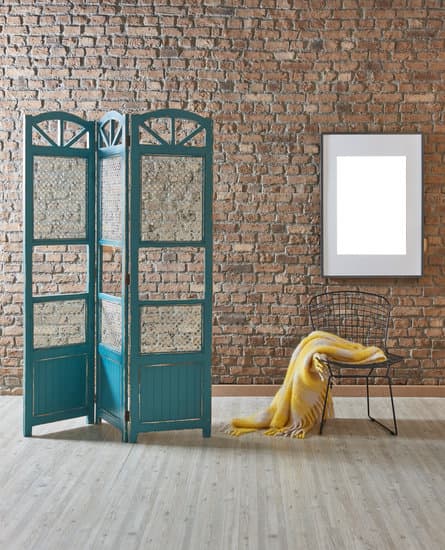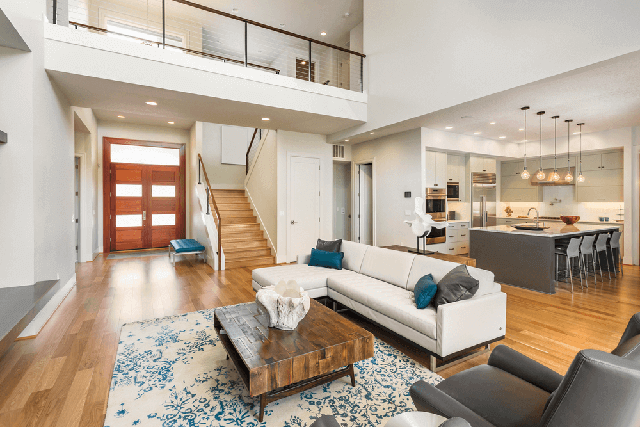Area rugs are an essential component of home decor, playing a vital role in enhancing the overall aesthetics and functionality of living spaces. By adding warmth, texture, and style to various rooms, area rugs have become a staple in interior design. From their origins in ancient times to their integration in modern home decor trends, area rugs have evolved into versatile decorative elements that can transform any space.
Throughout history, area rugs have been utilized as both practical and decorative items. Their roots can be traced back to ancient civilizations where they were cherished for their craftsmanship and intricate designs. Over time, area rugs have adapted to different cultures and interior design movements, reflecting the unique artistic expressions of various civilizations.
Today, there is an extensive range of area rug types available in the market, catering to diverse preferences and styles. From timeless Persian and Oriental rugs to contemporary designs or cozy shag rugs, homeowners have endless options to choose from. The right area rug can tie together the different elements of a room, serving as a focal point or adding subtle sophistication.
In this article, we will explore the significance of area rugs in home decor. We will delve into their rich history from ancient times to modern trends and provide comprehensive guidance on choosing the perfect rug for your space.
Furthermore, we will showcase how area rugs can serve as statement pieces within home decor while also offering practical benefits such as noise reduction, floor protection, and defining spaces within open floor plans. Whether you’re looking to add personality or enhance functionality in your living space, area rugs are essential elements that deserve careful consideration.
History of Area Rugs
The history of area rugs dates back to ancient times and has evolved throughout the centuries, becoming a significant element in modern home decor. Area rugs have not only served as functional floor coverings but also as expressions of cultural identity and artistic craftsmanship.
In ancient civilizations, such as Egypt, Greece, Persia, and China, area rugs were woven by hand using natural materials like wool and silk. These early rugs often featured intricate patterns and designs that reflected the cultural heritage and artistic styles of their respective regions. For example, Persian rugs were known for their elaborate floral motifs and rich color combinations, while Chinese rugs featured symbolic emblems and traditional pictorial scenes.
During the Renaissance period in Europe, Oriental rugs gained popularity among the upper class for their exquisite beauty and luxurious feel. These rugs were imported from countries like Turkey, India, and Persia, showcasing intricate geometric or floral patterns in vibrant colors. The demand for these exotic rugs grew rapidly during this time, leading to an expansion of trade routes and the development of rug-weaving centers in Europe.
In the 20th century, area rug production became more accessible with advancements in technology and manufacturing techniques. Machine-made rugs made from synthetic fibers like nylon or polyester emerged as affordable alternatives to hand-woven rugs. Additionally, contemporary designs began to flourish with abstract patterns or bold color combinations becoming popular choices for modern home decor.
Today, area rugs continue to be appreciated for their historical significance as well as their aesthetically pleasing qualities. From traditional Oriental and Persian designs to contemporary minimalistic styles, there is a wide range of options available to suit any personal taste or interior design theme. The history of area rugs serves as a testament to their enduring appeal and timeless contribution to home decor.
| Period | Key Features |
|---|---|
| Ancient Times | Hand-woven rugs using natural materials like wool and silk; intricate patterns reflecting cultural heritage |
| Renaissance | Oriental rugs imported from Turkey, India, and Persia; vibrant colors and elaborate geometric or floral patterns |
| 20th Century | Advancements in technology led to machine-made rugs made from synthetic fibers; contemporary designs with abstract patterns or bold color combinations became popular |
Types of Area Rugs
Persian Area Rugs
Persian area rugs are known for their intricate designs and high-quality craftsmanship. They often feature traditional motifs such as floral patterns, medallions, and geometric shapes. These rugs are hand-knotted using wool or silk fibers and can add a sense of luxury and elegance to any room. Persian area rugs are versatile and can complement various interior styles, from traditional to contemporary.
Oriental Area Rugs
Oriental area rugs originate from countries such as China, India, Turkey, and Iran. They typically showcase bold colors and detailed motifs like dragons, flowers, or animals. The weaving technique used for Oriental rugs is usually hand-knotted or hand-tufted to create intricate designs. These rugs bring a sense of cultural richness and exoticism to any space.
Contemporary Area Rugs
Contemporary area rugs embrace modern design aesthetics with clean lines, abstract patterns, and vibrant colors. They are often made from synthetic materials like nylon or polyester for durability and easy maintenance. Contemporary rugs offer versatility in terms of style options and can be a statement piece or a subtle addition to complement the overall decor.
Shag Area Rugs
Shag area rugs have experienced a resurgence in popularity due to their plush texture and cozy feel underfoot. These rugs feature long strands of fibers that create a deep pile, giving them a luxurious appearance. Shag rugs come in various materials such as wool, polyester, or acrylic blends. They add warmth and comfort to living spaces while creating a relaxed and inviting atmosphere.
Natural Fiber Area Rugs
Natural fiber area rugs are increasingly popular due to their eco-friendly properties and organic appeal. Materials like jute, sisal, seagrass, and bamboo are commonly used in crafting these rugs. They provide a rustic and earthy vibe to any room, making them perfect for coastal or bohemian-themed decor.
Kilim Area Rugs
Kilim area rugs are flat-woven, known for their geometric patterns and bold colors. Originating from Central Asia, kilims are traditionally made using wool or goat hair. These rugs can add a touch of cultural authenticity and artistic flair to any space.
When choosing an area rug, consider the style and function you desire for your room. The material, size, and design should all be taken into account to ensure the rug complements your existing decor while fulfilling your practical needs.
Choosing the Perfect Area Rug for Your Home Decor
Choosing the perfect area rug for your home decor is essential in creating a cohesive and visually appealing space. The right rug can tie together all the elements in a room and enhance its overall aesthetic. Here are some factors to consider when selecting an area rug for different rooms:
- Size: The size of the area rug is crucial in achieving the desired look. In living rooms, the rug should be large enough to fit all the furniture on it or at least have the front legs of the furniture resting on it.
In dining rooms, ensure that the rug extends beyond the table and chairs when they are pulled out. For bedrooms, choose a rug that covers a significant portion of the floor at the foot of the bed. - Shape: Area rugs come in various shapes, including rectangular, square, round, and oval. Consider the shape of your room and furniture when deciding on a rug shape. Rectangular rugs work well with most furniture arrangements, while round rugs are great for creating a focal point in smaller spaces.
- Design: The design of an area rug can greatly impact the overall style of your room. Consider whether you want a bold pattern or a more subtle design based on your existing decor style and personal preference. Persian and Oriental rugs offer intricate patterns and traditional designs, while contemporary rugs provide more modern and abstract options.
- Material: The material of an area rug affects both its appearance and durability. Common materials include wool, silk, cotton, jute, and synthetic fibers like nylon or polyester. Wool rugs are known for their plushness and durability, making them suitable for high-traffic areas. Silk rugs add a luxurious touch but may require more delicate care.
- Color coordination: Choose an area rug color that complements or contrasts with your existing decor scheme. Consider factors such as wall color, furniture upholstery, and other decorative elements in the room to create harmony or make a bold statement.
Remember, investing in a high-quality area rug can greatly enhance your home decor and provide long-lasting comfort. Take the time to carefully consider the size, shape, design, material, and color coordination to ensure the perfect area rug for your space.
Area Rugs as Statement Pieces
Area rugs have long been recognized as essential elements in home decor, not only for their functional benefits but also for their ability to serve as statement pieces that add personality and style to any space. By incorporating bold patterns, vibrant colors, and interesting textures, area rugs can become focal points within a room and truly transform the overall aesthetic.
Choosing Bold Patterns
One way to make a statement with an area rug is by selecting one with a bold pattern. Whether it’s geometric shapes, intricate designs, or unique motifs, a rug with a standout pattern immediately catches the eye and becomes a visual centerpiece in the room. This can be particularly effective in spaces with neutral or minimalistic decor, where a vibrant rug acts as an anchor point and injects energy into the space.
Exploring Vibrant Colors
Color plays a crucial role in setting the mood and atmosphere of a room, and area rugs offer an opportunity to experiment with various shades and tones. Opting for bold and vibrant colors can add instant personality to your space.
For example, a brightly colored rug in a neutral-toned room can create contrast and make the rug stand out even more. On the other hand, using complementary or analogous colors can create harmonious visual compositions that tie together different elements of your decor.
Embracing Unique Textures
In addition to patterns and colors, texture is another element that can elevate an area rug from merely functional to visually stunning. Consider choosing rugs with unique textures such as shaggy or layered materials like wool or silk. These textured rugs not only add visual interest but also provide tactile experiences that enhance the overall sensory appeal of your space.
By selecting an area rug that makes a statement through its pattern, color scheme, or texture (or all three), you can personalize your space while adding depth and character to your home decor. However, it’s important to keep in mind that a bold area rug should be balanced with the rest of your decor, ensuring that it complements the overall aesthetic and doesn’t overwhelm the space.
With careful consideration and creativity, an area rug can become the centerpiece that ties together your entire room and reflects your unique personality and style.
Area Rugs for Functionality
Area rugs not only add beauty to a room but also serve practical purposes that enhance the functionality of home decor. In addition to being visually appealing, area rugs offer a range of benefits that contribute to the overall comfort and usability of different living spaces.
One of the key advantages of using area rugs is noise reduction. They help absorb sound, reducing echoes and minimizing the impact of footsteps or other noises in high-traffic areas. This can be particularly beneficial in apartments or homes with multiple levels, where noise transmission between floors can be an issue.
Area rugs also provide floor protection, especially for surfaces such as hardwood or tile. They act as a barrier against scratches, spills, and other damage that can occur from everyday use or accidents. By placing an area rug in high-traffic areas or under furniture, you can preserve the quality and longevity of your flooring.
Furthermore, area rugs add warmth to a room both literally and figuratively. From a practical standpoint, area rugs offer insulation and help retain heat during colder months by preventing drafts from seeping through gaps in flooring. On a psychological level, they create a cozy atmosphere that enhances the overall comfort and inviting feel of a space.
In large open floor plans or multi-purpose rooms, area rugs play an essential role in creating defined spaces within the larger layout. By strategically placing different area rugs, you can visually divide an open space into distinct sections for various activities. This allows for better organization and optimal utilization of each specific area without sacrificing style.
With these practical benefits in mind, it’s clear that incorporating well-chosen area rugs into your home decor goes beyond mere aesthetics. Not only do they enhance the visual appeal of a room but they also contribute to its functionality by reducing noise, protecting flooring, adding warmth, and helping define different areas within an open floor plan.
Whether you’re aiming for a stylish living room feel or seeking practical solutions for daily living needs, investing in high-quality area rugs can transform your home decor.
Maintenance and Care Tips for Area Rugs
Area rugs are not only a stylish addition to any home decor, but they also require proper maintenance and care to ensure their longevity and appearance. This section will provide you with some valuable tips on how to effectively clean and maintain your area rugs, keeping them looking fresh and beautiful for years to come.
Firstly, regular vacuuming is a crucial part of maintaining your area rugs. Depending on the foot traffic in the room, it is recommended to vacuum at least once a week. Be sure to use a vacuum cleaner with adjustable height settings and brush attachments suitable for the type of rug you have. When vacuuming, make sure to go over both sides of the rug, as dirt can accumulate even beneath the surface.
Spot-cleaning spills and stains is another important aspect of rug maintenance. As soon as an accident happens, act quickly by blotting the spill with a clean cloth or paper towel. Avoid rubbing or scrubbing the area, as this may damage the fibers and spread the stain further. Instead, dab gently until all excess moisture has been absorbed.
In addition to regular cleaning practices, it is also advisable to have your area rugs professionally cleaned every 1-2 years. Professional cleaners have specialized equipment and knowledge needed to effectively remove deep-seated dirt and stains without causing any harm to your rugs. This professional cleaning will help revitalize your rugs’ colors and restore their overall appearance.
By following these maintenance and care tips for your area rugs, you can ensure they remain in excellent condition for many years. Proper upkeep not only enhances their aesthetic appeal but also helps preserve their functionality in terms of floor protection and insulation. Implementing these cleaning practices will allow you to enjoy the beauty and comfort that area rugs bring to your home decor.
| Cleaning Tips | Description |
|---|---|
| Regular Vacuuming | Vacuuming at least once a week to remove dirt and debris |
| Spot Cleaning | Blotting spills and stains immediately with a clean cloth or paper towel |
| Professional Cleaning | Hiring professional cleaners every 1-2 years for deep cleaning and restoration |
DIY Area Rug Projects
One of the most exciting aspects of incorporating area rugs into your home decor is the opportunity for customization. DIY area rug projects allow you to add a personal touch to your space, creating a unique and one-of-a-kind design that reflects your style and personality. Whether you’re looking to revamp an old rug or create a brand new one from scratch, the possibilities are endless.
Here are some creative ideas to inspire your DIY area rug projects:
- Stenciling: Add intricate and eye-catching patterns to a plain rug by using stencils. Choose patterns that complement your existing decor or go for bold and trendy designs that make a statement.
- Dyeing: Transform the color of a faded or outdated rug by dyeing it with fabric dyes. Experiment with different colors and techniques, such as dip-dyeing or tie-dye, to achieve a truly unique look.
- Fabric Trims: Give your rug a decorative edge by adding fabric trims. Consider using pom-poms, fringes, tassels, or braids in coordinating colors to enhance the overall aesthetic appeal.
- Repurpose Old Textiles: Instead of throwing away old textiles, repurpose them into beautiful rugs. Cut up old bedsheets, curtains, or even denim jeans into strips and weave them together to create an eclectic rag rug.
When embarking on a DIY area rug project, keep in mind the following tips:
- Plan and measure accordingly before starting any project to ensure the final result fits well within the intended space.
- Use high-quality materials that can withstand foot traffic and regular wear and tear.
- Consider experimenting with different textures by combining various materials such as wool, cotton, jute, or even recycled fabrics.
- Don’t be afraid to think outside the box and get creative with unconventional shapes or designs.
By engaging in DIY area rug projects, you have the opportunity to infuse your personality into your home decor while also saving money compared to purchasing a ready-made rug. So go ahead, unleash your creativity, and customize your space with a beautiful area rug that is truly unique to you.
Trends in Area Rug Design
Area rugs are not only functional pieces for your home decor but also serve as stylish accents that can keep your space up-to-date with the latest trends. Staying on top of the ever-changing world of area rug design can help you create a contemporary and fashionable look in your living spaces.
One of the current trends in area rug design is the use of bold and vibrant colors. Bright hues such as emerald green, deep blue, and rich mustard yellow are popular choices for creating a statement with your area rug. These bold colors can add vibrancy and personality to any room, making them an excellent choice for those looking to inject some energy into their home decor.
Another trend in area rug design is the incorporation of natural materials and textures. Many homeowners are now opting for eco-friendly options, such as jute or sisal rugs, which not only add a touch of nature to their space but also contribute to sustainable living. Additionally, the use of textured materials like shag or wool adds depth and visual interest to the room.
Patterns are also playing a significant role in area rug design trends. Geometric patterns, tribal prints, and abstract designs are all popular choices for those who want to make a bold statement in their home decor. These patterns can add visual intrigue and create a focal point within any living space.
By keeping up with these trends, you can ensure that your area rugs seamlessly integrate with the rest of your home decor while adding a touch of style and sophistication. Whether you choose bold colors, natural materials, or eye-catching patterns, staying current with area rug design will elevate the aesthetic appeal of your living space.
Conclusion
In conclusion, area rugs are undoubtedly essential elements of home decor. Throughout history, area rugs have played a significant role in enhancing the aesthetics and functionality of different living spaces. From their origins in ancient times to modern home decor, area rugs have evolved and integrated themselves into various cultures and interior design movements.
When choosing the perfect area rug for your home, it is important to consider factors such as size, shape, design, material, and color coordination with existing decor. With the ability to serve as statement pieces, area rugs can add personality to your space by showcasing bold patterns, colors, and textures. Moreover, they offer practical benefits such as noise reduction, floor protection, warmth provision, and creating defined spaces within an open floor plan.
Maintaining and caring for area rugs is also crucial to ensure their longevity. Proper maintenance includes regular vacuuming, spot-cleaning when necessary, and seeking professional cleaning advice when needed. Additionally, DIY projects allow for customization and personalization of area rugs by adding unique touches like stenciling or repurposing old textiles.
Staying up-to-date with current trends in area rug design will help you keep your home decor fresh and stylish. By understanding popular patterns, colors, and textures in the ever-changing world of home decor, you can ensure that your living spaces remain fashionable.
Area rugs truly are essential elements of home decor. Their wide-ranging impact on beauty, comfort, and functionality cannot be overstated. So whether you’re looking to add a touch of style or enjoy the practical benefits they bring to your living space – don’t forget about the power of area rugs when it comes to enhancing your home decor.
Frequently Asked Questions
Are rugs considered home decor?
Rugs are indeed considered home decor. They play a crucial role in enhancing the aesthetics of any living space.
While some may view rugs as a functional item primarily used for warmth and protection, they also serve as a decorative element that can transform the overall ambiance of a room. With their various patterns, colors, and textures, rugs can complement and complete the design scheme of a space.
Why are rugs important in home decor?
Rugs are important in home decor for several reasons. First and foremost, they provide an added layer of comfort underfoot, making a room more inviting and cozy.
Additionally, rugs have the power to tie together different elements within a space by creating unity and cohesiveness. Whether it’s blending colors or bridging different design styles, rugs can act as a unifying factor that brings harmony to a room’s overall look.
How to design a living room with an area rug?
Designing a living room with an area rug involves careful consideration of both functional and aesthetic aspects. Firstly, it is essential to choose the right size rug that fits the living room area appropriately.
A general rule of thumb is to ensure that at least the front legs of all furniture rest on the rug for cohesion and balance. Secondly, select a rug that complements your existing color palette or acts as an accent piece to add visual interest to the space.

I’m thrilled to be your companion on this exciting journey through the world of home decor and design. With a passion for turning houses into homes and a keen eye for the finer details, I’m here to help you transform your living spaces into beautiful, functional, and meaningful havens.





